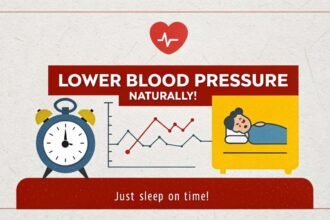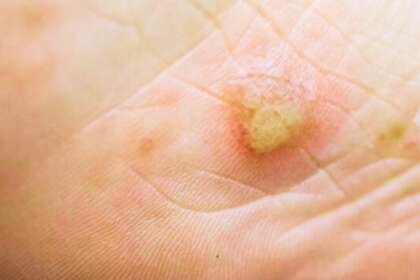Although many men have heard of the term “blue balls” to represent a condition that certain men may feel during sexual arousal, many myths and misconceptions surround this phenomena. Researchers at the Kinsey Institute found that half of all males have experienced blue ball at some point in their life.
Although blue ball are common, there is a lot of misconception regarding what they are, what causes them, and how to treat them. As we delve into the facts and bust some myths regarding “blue balls,” we hope you’ll find this post informative and enlightening. We’ll talk about how to talk to your partner about your sexual desires and how it might help you overcome feelings of depression.
We think that by sharing factual information regarding blue ball, we may assist men and their partners get a more nuanced understanding of their bodies and their sexual experiences.
What is Blue Balls?
Some men suffer “blue balls,” or a lack of ejaculatory response following prolonged sexual stimulation. Symptoms include a dull, throbbing ache or discomfort in the testicles and/or lower abdomen. Despite widespread belief to the contrary, the medical establishment has not yet acknowledged this phenomenon as a distinct medical illness.
Pain or discomfort in the testicles and lower abdomen are symptoms. Anxiety, frustration, and tension can result from this illness, even though it is not formally recognized as a medical condition. The pain associated with blue ball is usually alleviated by ejaculating.
Related: How Penis Rings Can Help You Have Better Sex
1. Physical Symptoms
Physical manifestations of blue balls can range from mild discomfort to severe pain in the testicles and lower abdomen. Also, some men may feel a pressing or heaviness in their groyne. Depending on the person, the pain could persist for just a few minutes or for several hours.
2. Psychological Impact
Even though we don’t know for sure, we suspect that the anxiety, frustration, and stress that can result from experiencing physical pain from blue balls can also affect our mental health. Sometimes males have trouble communicating their sexual discomfort to their partners out of shame or embarrassment, and this can have a severe impact on their relationships.
3. Causes of Blue Balls
The accumulation of blood in the testicles and surrounding tissues during sexual arousal is the root cause of the condition known as “blue balls.” The penis rises and the testicles swell when a man is sexually aroused because of the increased blood supply to these areas. The pain and discomfort of blue ball can be avoided if the male ejaculates often to release the built-up blood in the genital area.
Debunking the Myths About Blue Ball
For decades, men have used the term “blue balls” to describe the agony and discomfort that men feel following prolonged sexual stimulation that does not result in ejaculation. Despite the term’s popularity, there are a few misconceptions about “blue ball” that need clearing up. A number of myths concerning blue balls will be dispelled in this piece.
Myth 1: Blue Balls is a Serious Medical Condition
The idea that having “blue balls” is a sign of some kind of major medical problem is one of the most pervasive fallacies about this phenomenon. Yet this is not the case. Other from being unrecognised as a medical illness, blue ball have been shown to have no negative effects on fertility in the long run. The pain of blue balls is annoying, although it usually disappears after ejaculating or after a while.
Myth 2: Blue Ball is Always Caused by Sexual Arousal
Another common misconception is that sexual arousal is always the root cause of blue balls. The reality, however, is not always like this. Even though sex arousal is a possible contributor to blue ball, it is not the only reason for them. Blue ball pain can be brought on by exertion or even just prolonged periods of sitting or standing.
Myth 3: Blue Balls can Cause Long-Term Damage
Blue ball can cause permanent damage to the reproductive system? that’s just another urban legend. But that’s not the case, either. Having blue balls is not dangerous and will not hurt your testicles or the tissues around them. The pain of blue ball is usually alleviated by ejaculating, which can be done through sexual activity or masturbation.
How to Alleviate Blue Balls
Here, we’ll go over several tried-and-true methods for dealing with blue ball, as well as the value of open lines of communication.
1. Recommended Techniques
- Ejaculation: The most reliable remedy for blue balls is ejaculating. The act of masturbation or engaging in sexual activity can do this.
- Cold compress: Reducing swelling and relieving pain in the vaginal area by applying a cold compress can assist. Use a towel to apply a cold pack or a bag of ice to the region for 10 to 15 minutes at a time.
- Exercise: Increasing blood flow to the genital area through light exercise like walking or running can help reduce discomfort.
- Relaxation techniques: Stress and anxiety, which can lead to blue balls, can be alleviated through relaxation techniques like deep breathing, meditation, or yoga.
2. Importance of Communication
If blue ball are making you feel uncomfortable, it’s crucial to let your sexual partner know. Your spouse may be able to make you feel better by engaging in sexual activity with you or by simply being there for you emotionally.
Blue ball therapy has additional benefits, including easing feelings of shame and strengthening relationships.
It’s a good idea to consult a doctor if you’ve been having regular or persistent blue balls so that you can make sure it isn’t caused by something more serious.












